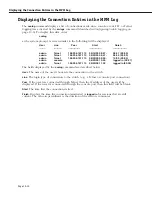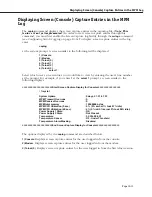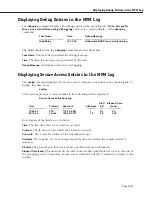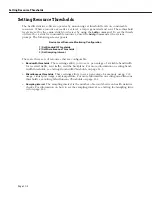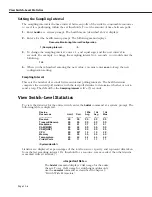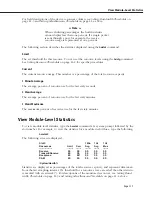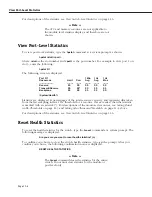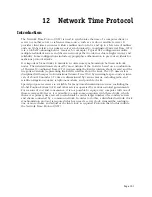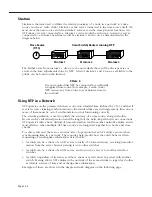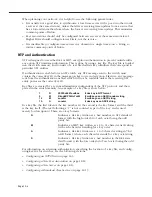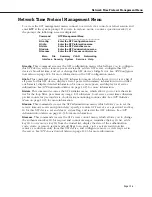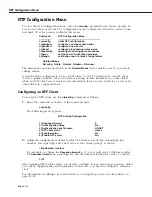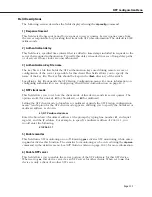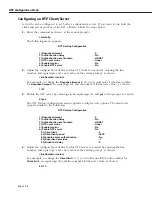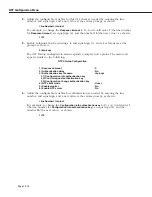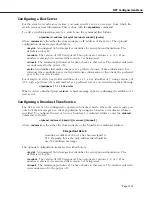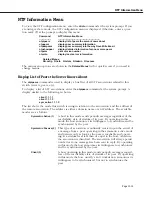
Page 12-1
12
Network Time Protocol
Introduction
The Network Time Protocol (
NTP
) is used to synchronize the time of a computer client or
server to another server or reference time source, such as a radio or satellite receiver. It
provides client time accuracies within a millisecond on
LAN
s, and up to a few tens of millisec-
onds on
WAN
s relative to a primary server synchronized to Coordinated Universal Time (
UTC
)
(via a Global Positioning Service receiver, for example). Typical
NTP
configurations utilize
multiple redundant servers and diverse network paths in order to achieve high accuracy and
reliability. Some configurations include cryptographic authentication to prevent accidental or
malicious protocol attacks.
It is important for networks to maintain accurate time synchronization between network
nodes. The standard timescale used by most nations of the world is based on a combination
of Universal Coordinated Time (
UTC
) (representing the Earth's rotation about its axis) and the
Gregorian Calendar (representing the Earth's rotation about the Sun). The
UTC
timescale is
disciplined with respect to International Atomic Time (
TAI
) by inserting leap seconds at inter-
vals of about 18 months.
UTC
time is disseminated by various means, including radio and
satellite navigation systems, telephone modems, and portable clocks.
Special purpose receivers are available for many time-dissemination services, including the
Global Position System (
GPS
) and other services operated by various national governments.
For reasons of cost and convenience, it is not possible to equip every computer with one of
these receivers. However, it is possible to equip some computers with these clocks, which
then act as primary time servers to synchronize a much larger number of secondary servers
and clients connected by a common network. In order to do this, a distributed network clock
synchronization protocol is required which can read a server clock, transmit the reading to
one or more clients, and adjust each client clock as required. Protocols that do this include
the Network Time Protocol (
NTP
).
Summary of Contents for Omni Switch/Router
Page 1: ...Part No 060166 10 Rev C March 2005 Omni Switch Router User Manual Release 4 5 www alcatel com ...
Page 4: ...page iv ...
Page 110: ...WAN Modules Page 3 40 ...
Page 156: ...UI Table Filtering Using Search and Filter Commands Page 4 46 ...
Page 164: ...Using ZMODEM Page 5 8 ...
Page 186: ...Displaying and Setting the Swap State Page 6 22 ...
Page 202: ...Creating a New File System Page 7 16 ...
Page 270: ...Displaying Secure Access Entries in the MPM Log Page 10 14 ...
Page 430: ...OmniChannel Page 15 16 ...
Page 496: ...Configuring Source Route to Transparent Bridging Page 17 48 ...
Page 542: ...Dissimilar LAN Switching Capabilities Page 18 46 ...
Page 646: ...Application Example DHCP Policies Page 20 30 ...
Page 660: ...GMAP Page 21 14 ...
Page 710: ...Viewing the Virtual Interface of Multicast VLANs Page 23 16 ...
Page 722: ...Application Example 5 Page 24 12 ...
Page 788: ...Viewing UDP Relay Statistics Page 26 24 ...
Page 872: ...The WAN Port Software Menu Page 28 46 ...
Page 960: ...Deleting a PPP Entity Page 30 22 ...
Page 978: ...Displaying Link Status Page 31 18 ...
Page 988: ...Displaying ISDN Configuration Entry Status Page 32 10 ...
Page 1024: ...Backup Services Commands Page 34 14 ...
Page 1062: ...Diagnostic Test Cable Schematics Page 36 24 ...
Page 1072: ...Configuring a Switch with an MPX Page A 10 ...
Page 1086: ...Page B 14 ...
Page 1100: ...Page I 14 Index ...


